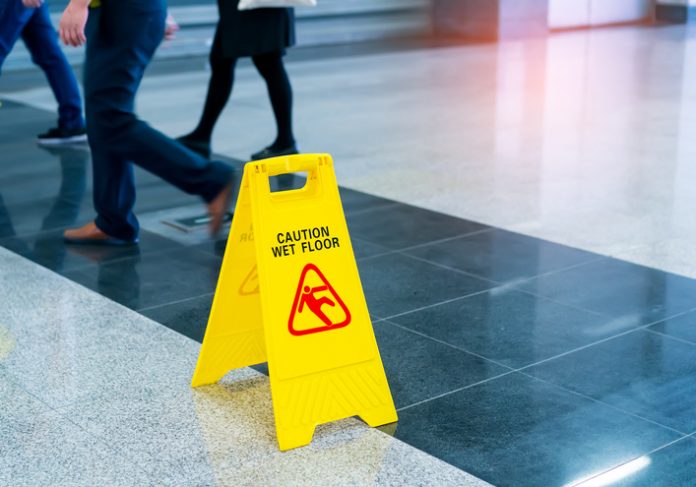
According to the National Floor Safety Institute (NFSI), slips and falls account for over eight million hospital emergency room visits annually. These visits include falling on stairs, ladders, tripping over a loose cord on the floor, an unseen obstruction, an unexpected drop in the floor, or an unexpected elevation in the floor.
Slip and fall accidents in this article refer to accidents that happen when someone slips or falls due to the condition of the floor. These accidents, according to the NFSI, account for approximately one million emergency room visits annually. Hotel owners and managers should know that for people over 65 years of age, slip and fall accidents are the second leading cause of injury-related deaths.
Preventing falls begins with knowing if a floor is slippery. Decades ago, to determine floor slipperiness, housekeepers would pull a bag of potatoes over the floor. If there was a lot of resistance, meaning it was hard to pull the bag, the floor was considered safe and not slippery. Of course, this method was subjective. One housekeeper could be stronger than another, making a large difference, but with more than one million slip and fall accidents happening every year in the United States along with thousands of deaths, measuring floor slip resistance subjectively is out of the question.
Fortunately, objective technology gives the industry a clearer and more precise picture of the slipperiness of a floor. Referred to as tribometers, they are available from several manufacturers in North America. They measure two distinct types of slip resistance on a floor. One is the COF, or the coefficient of friction. This measures the slip resistance of a floor when things are static and there is no motion on the floor. The other is DCOF, or dynamic coefficient of friction. As implied by the term dynamic, this test measures slip resistance during motion when people are walking on the floor.
To use tribometers effectively, a floor surface should be clean and dry and tested two or three times. After the tests, the machine will report one of three values:
- High. A high value indicates elevated slip resistance; the floor should be considered safe for lodging guests to walk on.
- Moderate. In a lodging facility, a moderate reading may not be satisfactory. Traction-enhancing floor finishes (wax) should be applied to the floor. Typically, these can be applied without refinishing the entire floor.
- Low. A low value indicates either the floor should be replaced, the flooring material is not providing enough traction to ensure safety, or the floor must be refinished. This means using floor machines to remove all the old finish (along with soils) on the floor and starting over using higher traction floor finishes.
Due Diligence
Unfortunately, while the technology exists to measure floor slip resistance, lodging administrators may find other issues must be addressed first to ensure their floors are safe. For instance, not all tribometers are accurate or accurate on certain types of floor materials. Some have been known to give a false reading.
Another issue is that not all floor finishes, even those that are rated slip-resistant, will provide the necessary slip resistance for specific floors. For instance, floor finishes may have a COF rating of 0.3 to 0.6. With some floors, such as quarry tile or brick, which are already considered slip resistant, using a floor finish with a 0.3 rating may be perfectly suitable. However, if the floor is honed natural stone or even glass, which has become more popular in recent years, a COF rating of 0.3 may be totally unsuitable. COF and DCOF values are not the same. If using a DCOF system, a value of 0.42 or higher is recommended to ensure slip resistance.
Because of these issues, lodging owners and managers are urged to work with knowledgeable janitorial distributors. In many cases, these distributors have been educated by floor covering manufacturers and chemical manufacturers on what types of tools, tribometers, cleaning solutions, and finishes work best on which types of floors. With the stakes so high, managers should view the recommendations and advice as imperative. This is especially true now as hotel properties worldwide are coming back to life after two years of virtual shutdown.











